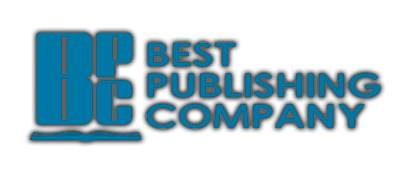Holiday Customer Support Closure
Please note that our customer support will be closed for the holidays starting December 24th through January 4th.
DEPTH Blog
Why Do Patients Quit Hyperbaric Therapy?
In this podcast and article by Roque Wicker, MBA, author of HBOTechBlog.com, and creator of the Hyperbaric Oxygen Therapy Patient Safety Instructions we explore the relationship between effective patient education on hyperbaric compliance, patient satisfaction, and reimbursement.
Have you ever wondered why your patients quit hyperbaric therapy? Why would they quit despite the fact that they could potentially lose a toe or a foot? Listen to this podcast interview with Roque Wicker as he answers some of these questions.
Podcast
Sure a certain percentage of patients are claustrophobic, some of them listened to their archaic physicians negative viewpoint of HBOT, some just do not care and have given up, then there are the ones we put in that “uncategorized box” because we really couldn’t pinpoint their rational, instead we categorize these patients simply as “NON-COMPLIANT”.
Are these patients really non-compliant or are they just uninformed and improperly educated? One should ask, “Who in the right mind would sacrifice losing a limb vs going in a chamber for two hours a day watching TV to save the limb in question?” Ask yourself the same question and if you are educated enough and informed enough (and not out of your mind) about the pros of HBOT and the cons of losing a limb, you surely wouldn’t opt for an amputation if you knew there was a possibility of saving that limb. So back to my original question, "Why?"
Is there a possibility that the patient/s were not properly educated on how hyperbaric therapy works and the importance of “daily” treatments explained to them in a way they could understand? In this article I would like to describe the important relationship between improved and effective patient education, patient compliance, patient satisfaction, and value-based reimbursement.
It is now 2014 and healthcare has been turned upside down and inside out. Payments by Medicare and insurance payors to hospitals and physicians are now being tied to patient satisfaction in order to increase the “Quality of Care” and the proper delivery of care to patients (this is called Value Based Purchasing).
That old school bad attitude that you use to get waiting in the E.R. waiting room is no longer being tolerated in healthcare and the control has partially been given back to the patients via the patient satisfaction survey. These surveys are there to hold staff accountable not just for their abilities but also for their attitudes towards patients. Your every action with every patient is being surveyed. This includes how you make eye contact, how you introduce yourself, your skill level, your ability to explain what you do, how you do it (patient education), all the way up to the very last moment you have an interaction with the patient – you are constantly being graded. Despite the fact that you are a highly skilled worker with all your competencies signed and your fancy certificate with the gold seal is hanging on the on the wall, the one main thing you are being surveyed on is your ability to “connect” with your patients on a human level, your soft skills in combination with your hard skills. It is no longer acceptable in healthcare to be a silent rock with no personality that turns knobs and takes vitals all day long, no offense to lab folks but if you do not have a personality and would rather work alone, the lab is perfect for you.
A study by the Journal of Healthcare Quality, the peer reviewed publication of the National Association for Healthcare Quality (NAHQ) found that patient satisfaction expressed by patients can be enhanced by improving the quality of information they receive, and also help assure successful recovery without the need for further follow-up. A retrospective study was done with 60 outpatients receiving various forms of outpatient therapy. Results showed that the average satisfaction score (scale 1-5) in the group receiving better information was 4.2 vs. 2.95 in the group that was less informed. If patients are not well informed about their therapy, not knowing can foster anxiety and the need for more medical attention to provide reassurances. "These findings demonstrate that good pre-treatment communication with patients can alter behavior upon discharge, improve success in managing procedures in an outpatient setting, and possibly improve cost-effectiveness.
“9 out of 10 patients do not receive health information in a way they can use or understand”
(Source: Department of Health and Human Services)
More chambers, less time + less staff = less teaching
With the growth of the hyperbaric industry, the reduction in reimbursement, and the closure of one year hyperbaric training programs across the country, the hyperbaric industry is experiencing pressures to run the programs as lean as possible. Add to this the shortage in well trained and educated Certified Hyperbaric Technologists (CHT’s) and it is only a matter of time that the quality of care patients receive in hyperbaric treatment centers goes down dramatically. When asked, many hyperbaric technologists will say that they educate their patients, but proper education involves far more than handing the patient a brochure, teaching the valsalva, and reading them the HBO consent form. What’s happening here is that patients are exposed to information by the hyperbaric
technologists, but education is far more than exposure. It must be planned, spoken in layman’s terms, thought out, and condition specific.
Health Literacy is not Common
Health literacy is the degree to which individuals have the capacity to obtain, process, and understand basic health information and services needed to make appropriate health decisions. Health information can overwhelm even persons with advanced literacy skills. Medical science progresses rapidly. What people may have learned about health or biology during their school years often becomes outdated or forgotten, or it is incomplete. Moreover, health information provided in a stressful or unfamiliar situation is unlikely to be retained. Now remember that you are complicating it even further by throwing in multiple gas laws, underwater physics, feet of saltwater, and atmospheres absolute at these patients – you might as well kiss that patients health literacy goodbye. A patient’s
health status is mostly affected by their health literacy skills and it is vital to be aware and assume that all patients do not understand what it is you are talking about unless you use layman’s terms during your education.
Resources
Click the image below to learn more about these effective patient materials created by Roque Wicker, exclusively available through Best Publishing Company.
| Hyperbaric Oxygen Therapy Patient Safety Instructions |
 |
Your Experience
Now, we'd like to hear from you. In the comments below, tell us what is your biggest difficulty in providing effective patient education. Is it a time issue? Or maybe you don't have a list of all the subjects that should be covered during patient education/orientation. Let us know what struggles you have and we'll address them in future blog posts and podcasts.
When you subscribe to the blog, we will send you an e-mail when there are new updates on the site so you wouldn't miss them.






